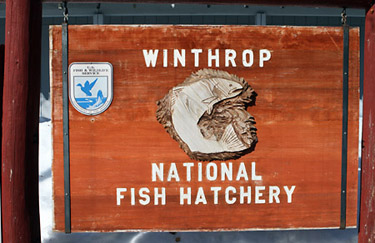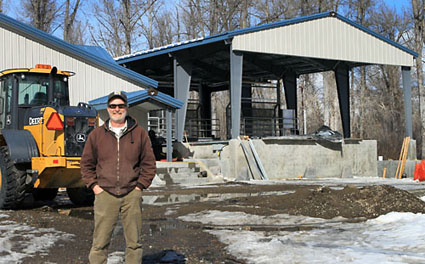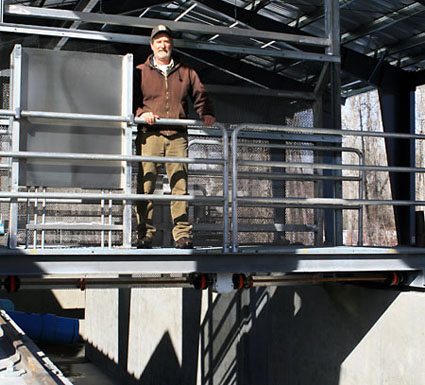home | internet service | web design | business directory | bulletin board | advertise | events calendar | contact | weather | cams

 More to See When the U.S. Fish and Wildlife Service’s Winthrop National Fish Hatchery opens May 12 after an extended closure for renovation, visitors will be able to view fish underwater from a new outside viewing area. They also will be able to watch a large mechanical crowder herd fish into an 8-by 8-foot lift basket that will be hoisted by an elevator. The fish will move from the basket into a flume that will carry them to a tank where they will be anesthetized before their eggs are removed. From a new viewing room, visitors will be able to watch hatchery workers remove eggs.  Winthrop National Fish Hatchery manger Chris Pasley in front of new additions to the facility. On the right is a fish crowder. The building on the left will house fish spawing activities and a new visitors' viewing area. Winthrop National Fish Hatchery manger Chris Pasley in front of new additions to the facility. On the right is a fish crowder. The building on the left will house fish spawing activities and a new visitors' viewing area.The hatchery is spending $2.9 million in Bureau of Reclamation funding generated by power sales from Grand Coulee Dam to erect two new holding pens, a fish ladder and a new spawning facility, said hatchery manager Chris Pasley. “It’s going to be pretty slick when it’s all working,” he said. In 2001 visitors also were able to see fish under water, he added, but only for one season as that system proved unworkable. Returning fish will be on view starting in June, when spring Chinook appear, said Pasley, and fish will continue to be on view through summer into fall. Coho make their first appearance in late September and will be on view through October and November. Thanks to the Methow Valley Fly Fishers, a new kids’ fishing pond will be completed in time for the annual kids’ free fishing day on June 9, according to Pasley.  A closer look at the new fish crowder. A closer look at the new fish crowder.Beavers temporarily living in concrete ponds while awaiting relocation to natural habitat are also likely to be on display when the hatchery reopens, said Pasley. The Methow Conservancy, Pacific Biodiversity Institute, U.S. Forest Service, the National Fish and Wildlife Foundation, Ecotrust, Washington Audubon, and the Washington Department of Fish and Wildlife are cooperating with the hatchery to relocate beavers from places where they are causing damage. The beavers are moved to national forest lands where their chewing and damming proclivities can be put to positive use increasing stream complexity, riparian vegetation and groundwater recharge. Because beavers help capture stream sediment and delay stream runoff, over time this project is expected to provide measurable improvement in water quality, according to the hatchery’s website. 2/27/2012 Comments
|